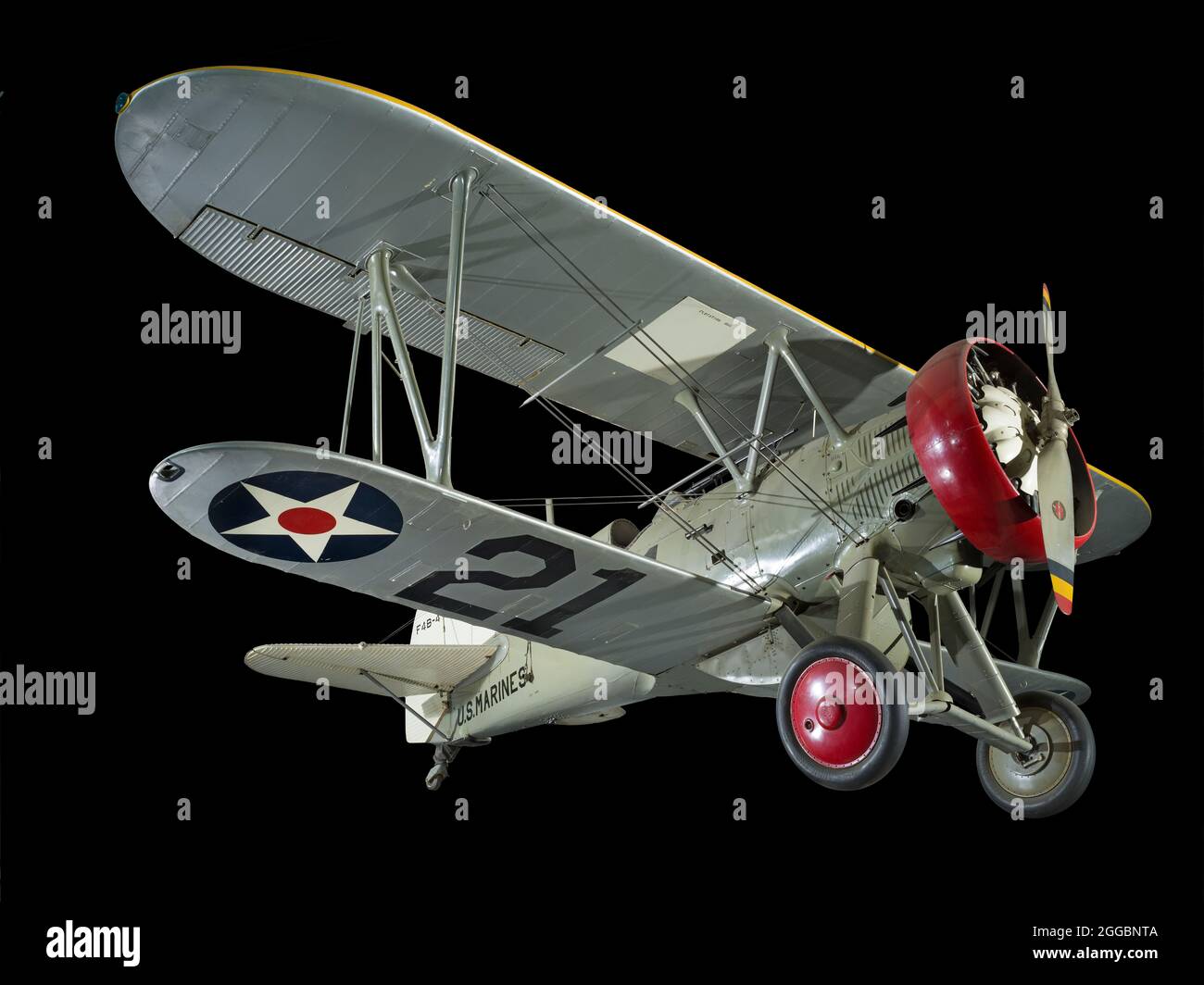Wing Span 914 cm (360 in.), Length 612 cm (241 in.), Height 285 cm (112 in.), Weight 1,070 kg (2,354 lb). The Boeing F4B/P-12 series served as the primary fighter of the U.S. Navy and U.S. Army Air Corps in the early 1930s, and it remained in service in numerous roles until the early 1940s. It was the last wooden-winged, biplane fighter produced by Boeing and used by the U.S. military. The large quantity of F4B/P-12s built and purchased helped to establish Boeing as an important aircraft manufacturer and to sustain the firm through the economic hardships of the Great Depression. Total producti

Image details
Contributor:
Heritage Image Partnership Ltd / Alamy Stock PhotoImage ID:
2GGBNTAFile size:
146.7 MB (2.9 MB Compressed download)Releases:
Model - no | Property - noDo I need a release?Dimensions:
8272 x 6200 px | 70 x 52.5 cm | 27.6 x 20.7 inches | 300dpiPhotographer:
Heritage ImagesMore information:
This image could have imperfections as it’s either historical or reportage.
Wing Span 914 cm (360 in.), Length 612 cm (241 in.), Height 285 cm (112 in.), Weight 1, 070 kg (2, 354 lb). The Boeing F4B/P-12 series served as the primary fighter of the U.S. Navy and U.S. Army Air Corps in the early 1930s, and it remained in service in numerous roles until the early 1940s. It was the last wooden-winged, biplane fighter produced by Boeing and used by the U.S. military. The large quantity of F4B/P-12s built and purchased helped to establish Boeing as an important aircraft manufacturer and to sustain the firm through the economic hardships of the Great Depression. Total production of the F4B/P-12 series reached 586. The fourth and final version of the design was the F4B-4, 92 of which were built. Twenty-one were assigned to the U.S. Marine Corps. The NASM F4B-4 is one of these. It was assigned to Marine Fighting Squadron 10, and served there until July 1933. It was then transferred to VF-9M at Quantico, Virginia, where it flew until 1939.